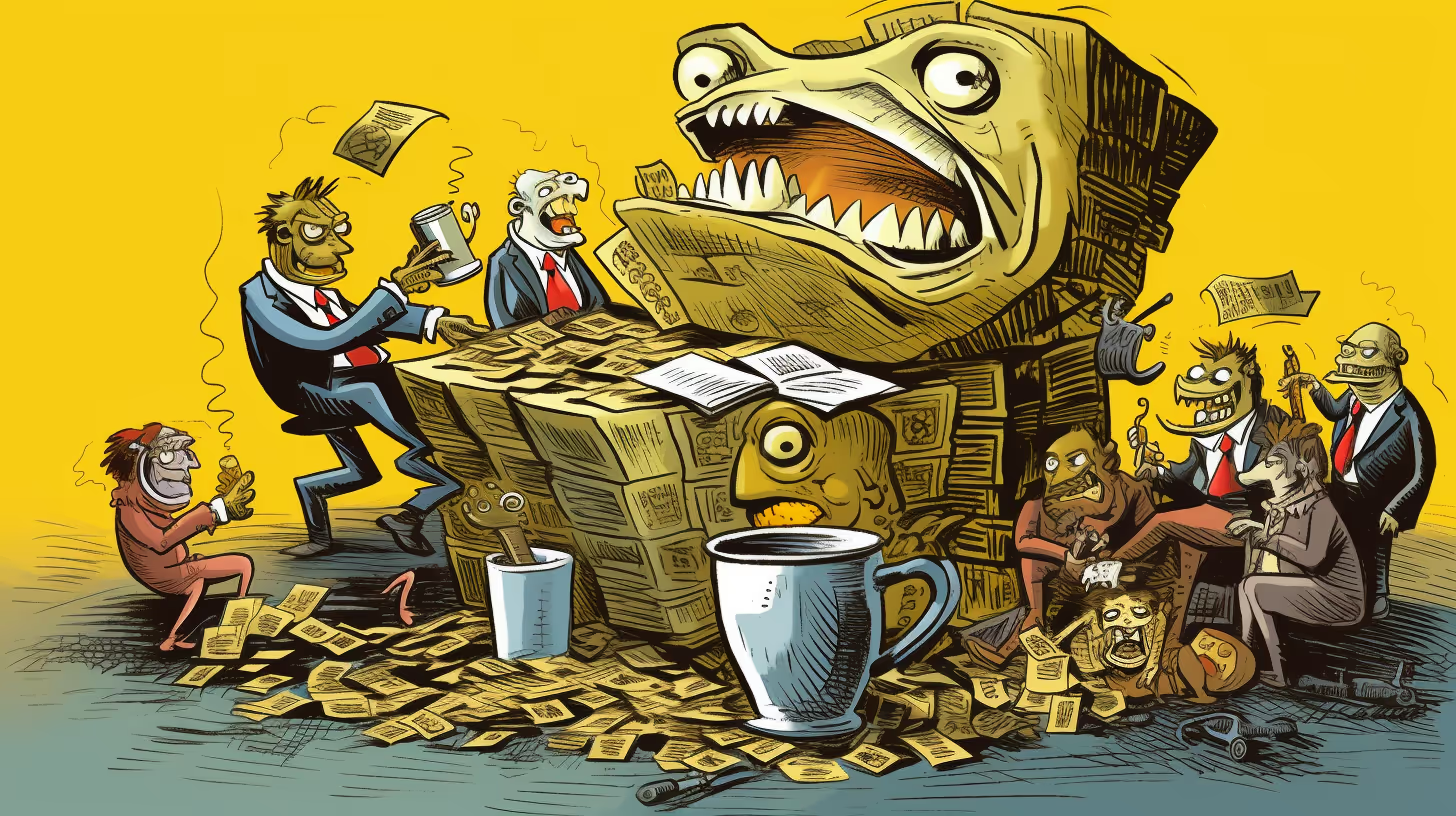Donations
Every donation, big or small, makes a significant impact.

Latest Podcasts
Stone Cold Killers
Hidden Inflation Crisis
Trump's America First
Exploring the Pitfalls of Liberal Tax Policies
The debate over tax policies is a battleground, and the idea of taxing the wealthy more is a liberal favorite. But let's cut through the noise: while packaged as fair and just, this idea is loaded with economic landmines and historical blunders.
Historical Context: A Story of Misfired Intentions
In the 1960s, the United States slapped the wealthy with towering tax rates, expecting a windfall of government revenue. What a miscalculation! Instead, these rates spawned a plethora of unintended, damaging outcomes. Cornered by the government's grasp, wealthy folks turned to every loophole in the book – offshore tax havens, tax-exempt bonds; you name it. The result? A nosedive in declared incomes and a shrinking tax base.
But wait, it gets worse. High tax rates became a beacon for tax evasion. The wealthy, desperate to cling to their earnings, fueled a shadow economy. This wasn't just a loss in revenue; it was a slap in the face to law enforcement and tax fairness.
Across the pond, Britain's post-war tax frenzy led to a chilling effect on domestic investment and entrepreneurship. Entrepreneurs and businesses, choked by excessive taxes, lost their appetite for risk and innovation. The UK's economic vibrancy flatlined, a victim of its tax policy.
Economic Implications: The High Price of Taxing the Wealthy
Taxing the rich? It sounds like a plan until it backfires economically. The wealthy – the usual suspects in driving investment and innovation – find their hands tied with high taxation. Their reduced disposable income means less money pumped into new ventures, technologies, and jobs. Starved of this fuel, the economy slows down, shedding jobs and its dynamic edge.
These high taxes don't just stagnate the economy; they create a static environment where financial agility and risk-taking go to die. Long-term, we're looking at a less competitive, slower-to-adapt economy.
The Laffer Curve: The Taxing Truth
Enter the Laffer Curve, a cornerstone in the conservative economic playbook, and for good reason. This isn't just a curve; it's a reality check on the repercussions of over-taxation. It presents a simple yet profound argument: there's a sweet spot in tax rates that maximizes government revenue without pushing taxpayers to their limits. This optimal tax rate is critical, especially when discussing taxing the wealthy.
The curve illustrates that the government obviously collects no revenue at a 0% tax rate. But here's where it gets interesting: at a 100% tax rate, the government also collects nothing. Why? Because at 100%, there's no incentive for people to earn taxable income – why bother if the government is going to take it all? So, somewhere between these two extremes lies the ideal tax rate that balances revenue generation with taxpayers' willingness and ability to pay.
When taxing the wealthy, the Laffer Curve serves as a stark warning: push the tax rates too high, and you'll end up with less, not more, in government coffers. High tax rates discourage investment, encourage tax avoidance, and can lead to overall decreases in economic activity. The wealthy, faced with excessive tax demands, might reduce their taxable activities, move their assets offshore, or even relocate to more tax-friendly jurisdictions. All these responses mean one thing – a drop in revenue for the government.
But the Laffer Curve isn't just theoretical economics; it's been observed in real-world scenarios. For example, in the 1980s, the United States witnessed a significant increase in revenue following tax cuts, particularly from upper-income brackets. This was a classic case of the Laffer Curve in action: lower tax rates incentivized more economic activity, increasing overall tax revenue.
Effects on Job Creation and Wages: A Domino Effect
High taxes act like a chokehold on businesses, especially on their capacity to expand their workforce. When business costs soar, hiring new employees or even maintaining current staff levels becomes a financial strain. Companies, especially small and medium-sized ones, may have to freeze hiring or, worse, lay off employees. This leads to higher unemployment rates, where the workforce bears the brunt of misguided tax policies.
But it's not just about jobs; it's also about what those jobs pay. When businesses face the crunch of high taxation, wage growth hits a wall. Raises and bonuses have become a thing of the past as companies struggle to balance their books. The workers, expecting a fair share of growth and profitability, are stuck with stagnant wages. This is the opposite of what tax hikes on the rich promise.
In an environment of punitive taxation, businesses are forced into survival mode. Cost-cutting becomes the order of the day, and unfortunately, employee benefits and salaries are often the first on the chopping block. Health benefits, retirement plans, and other perks may be slashed. Workers, who are supposed to be the beneficiaries of wealth redistribution through high taxes, end up losing more than just their bonuses; they lose their sense of financial security.
The repercussions don't stop at the company gates. This wage stagnation and job insecurity ripple through the economy. Workers with less income are less likely to spend, affecting other businesses and industries. It's a vicious cycle: reduced spending leads to lower profits for businesses, which leads to further job cuts and wage freezes, perpetuating the economic downturn.
International Comparisons: A Tale of Two Policies
When it comes to tax policies, a global view is enlightening. Let's zoom in on Singapore and Hong Kong – two economic powerhouses with a common thread: they keep the taxman on a short leash when it comes to the wealthy. The result? Economies that don't just grow; they thrive.
Singapore's approach to taxation is a masterclass in economic wisdom. With one of the lowest personal income tax rates for high earners in the world, it has crafted an environment where wealth creation is not just possible but encouraged. This isn't about coddling the rich; it's about recognizing the role of wealth creators in driving growth. Singapore's tax policy is a magnet for multinational corporations and high-net-worth individuals, making it a hub for investment, innovation, and job creation. The city-state's booming financial sector, robust manufacturing industry, and vibrant start-up ecosystem are proof of what happens when tax policies align with economic ambition.
Hong Kong tells a similar story. Known for its low tax rates and capped income tax, it is a beacon of economic freedom. This policy has catapulted Hong Kong into one of the world's foremost financial centers, attracting businesses and talent from across the globe. The territory's thriving stock market, bustling port, and dynamic service sector are not accidents but the fruits of a tax regime that understands the value of keeping capital in the hands of those who can invest and grow it. Hong Kong's economic success story is a testament to the power of low taxation in fostering an environment where businesses and individuals can flourish.
In stark contrast, countries with higher tax rates on the wealthy often struggle with sluggish economic growth, capital flight, and a brain drain. Businesses and individuals in these high-tax environments are incentivized to move their operations and wealth to more tax-friendly countries. The loss of these economic contributors leads to reduced investment, slower job creation, and a general stagnation in economic dynamism.
The Role of Government Spending: The Spending Spree Problem
Tying this all back to government spending, fiscal conservatism isn't just about keeping taxes low; it's about smart, restrained government spending. Jacking up taxes on the wealthy often translates to a government spending bonanza – inefficient, ineffective, and a recipe for ballooning national debt.
This conservative critique isn't just theory; it's grounded in hard evidence and economic reality. Taxing the wealthy excessively? A misguided strategy that often veers off course from its egalitarian goals. The conservative call is for a balanced tax policy that fuels investment, drives growth, and steers clear of heavy-handed government intervention.






0 Comments
Login or Subscribe to Join the Conversation
SubscribeLog in